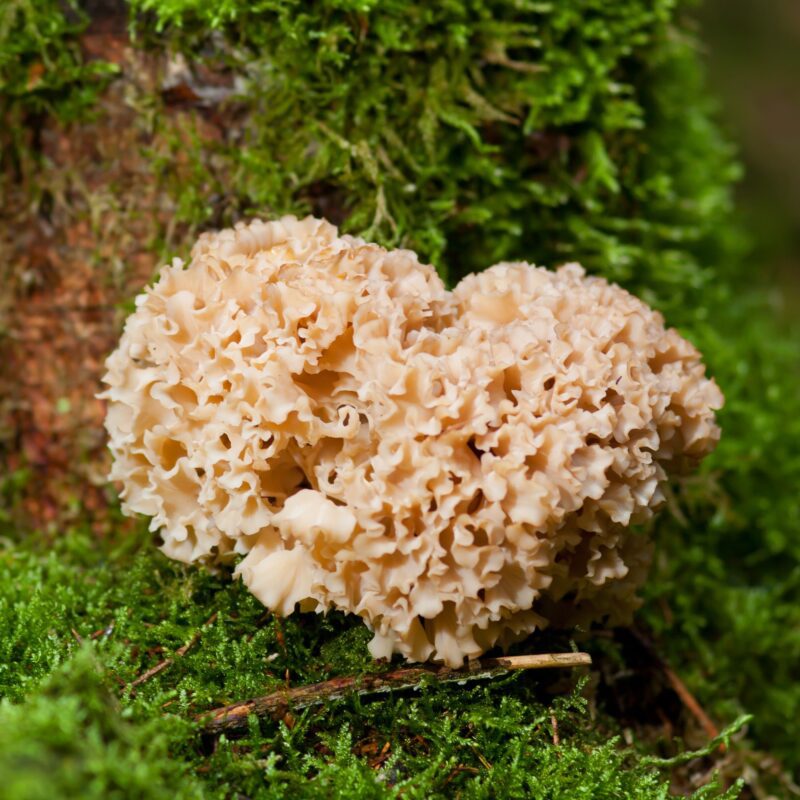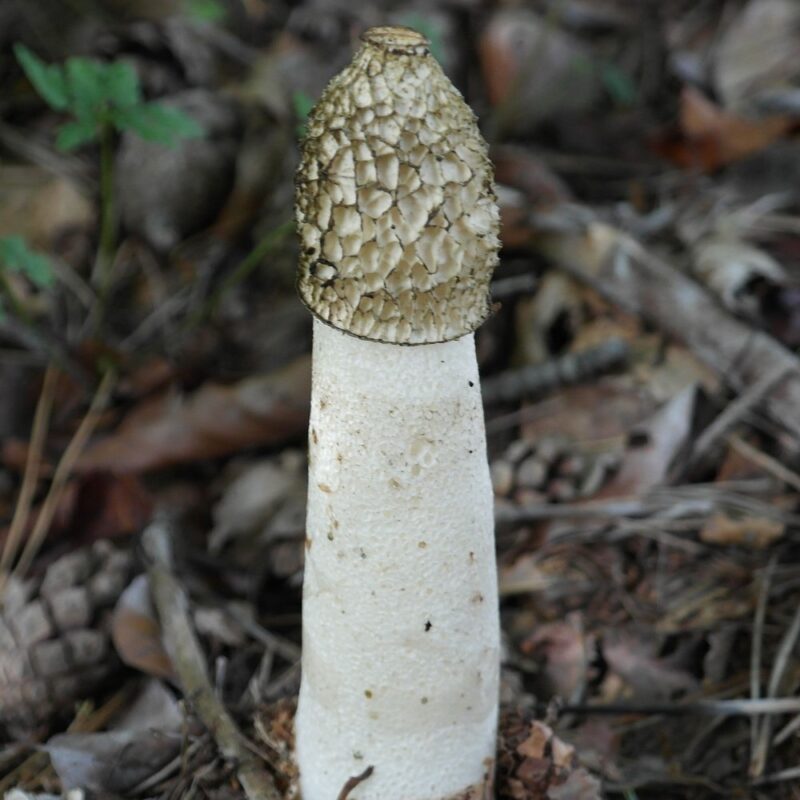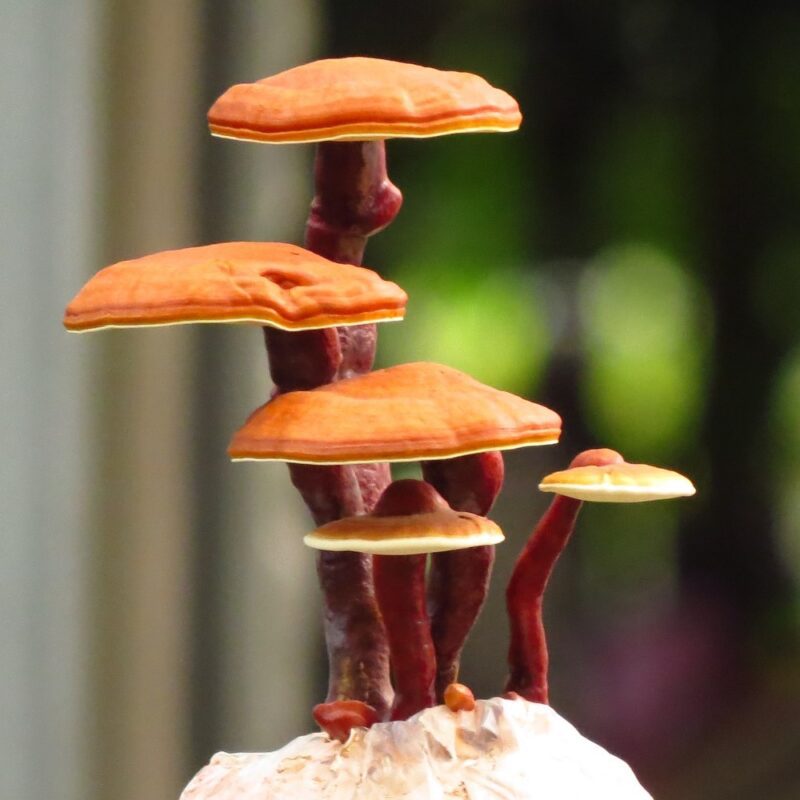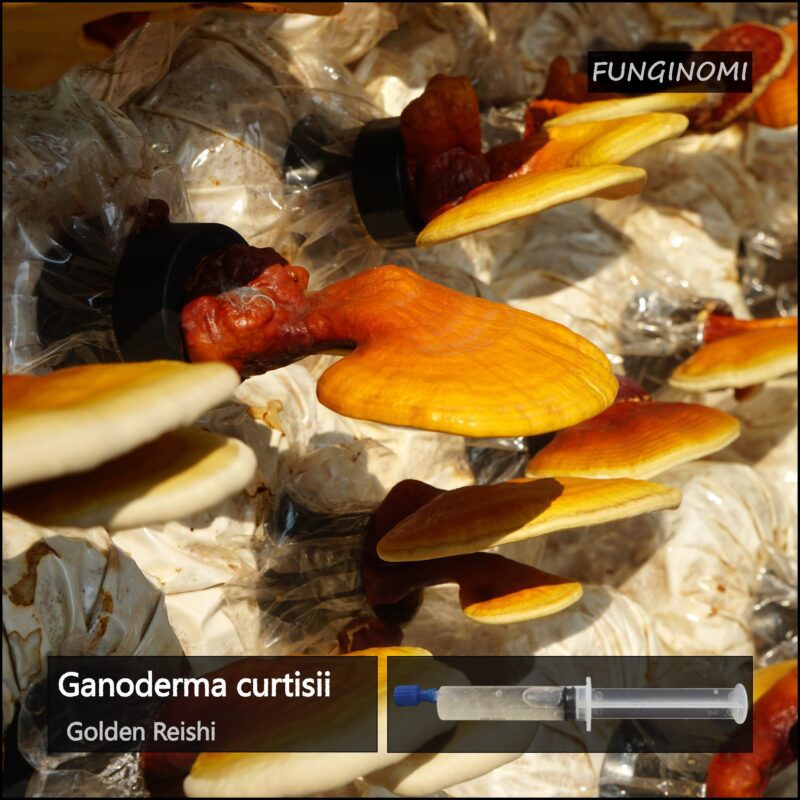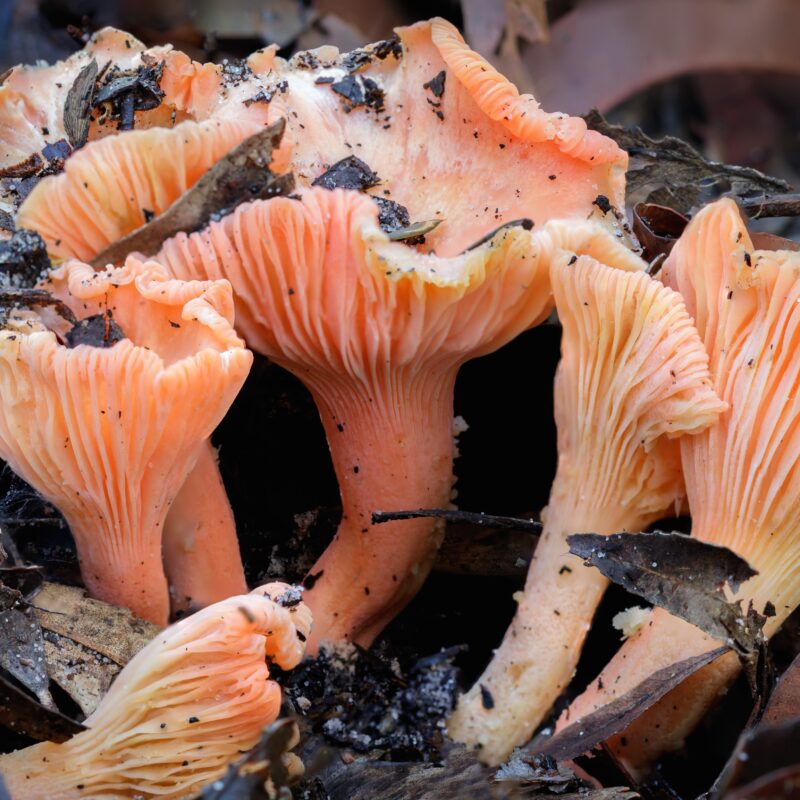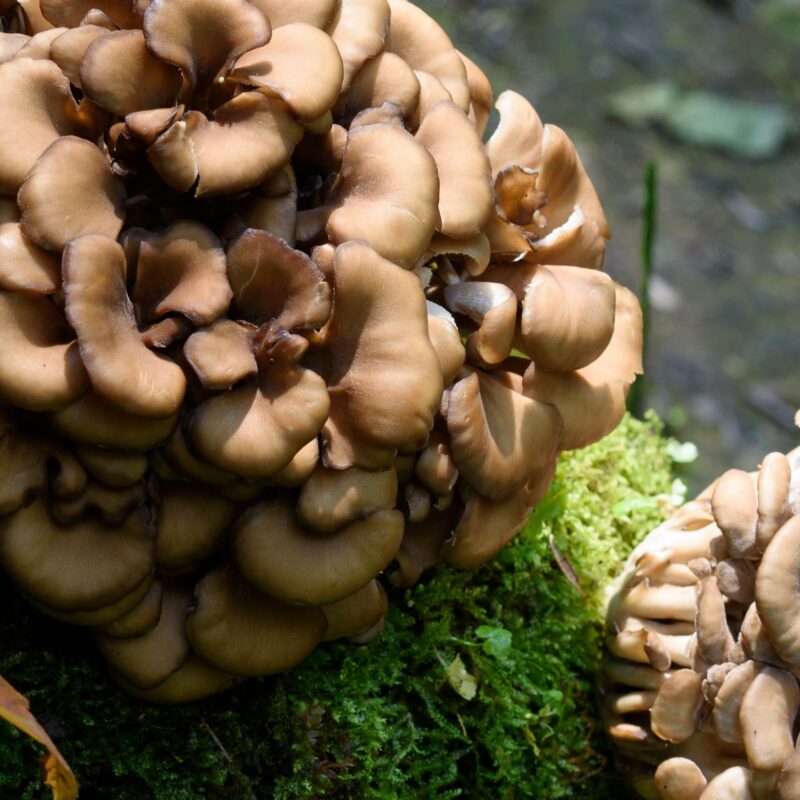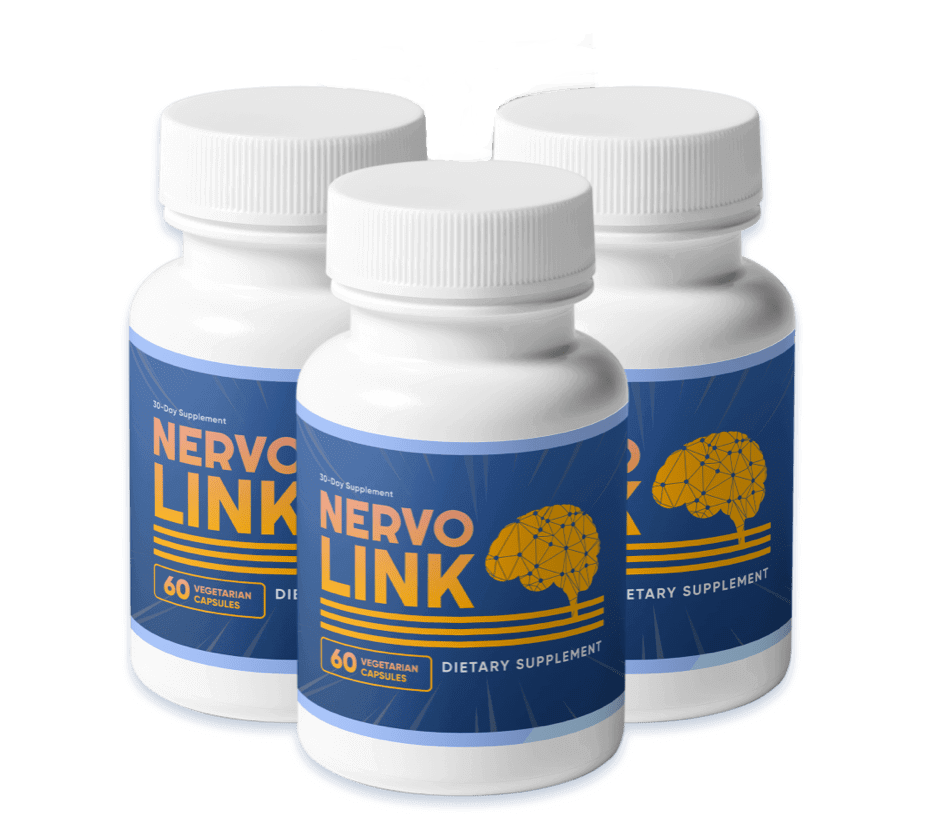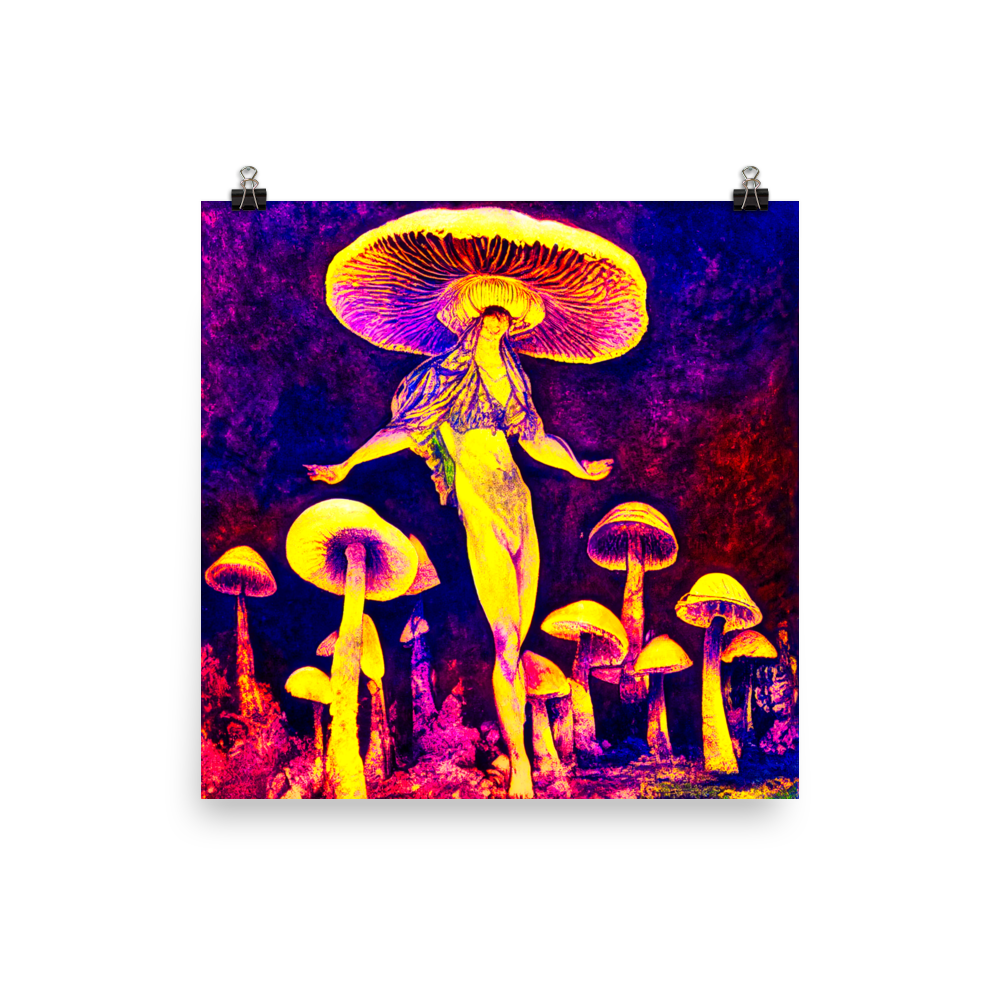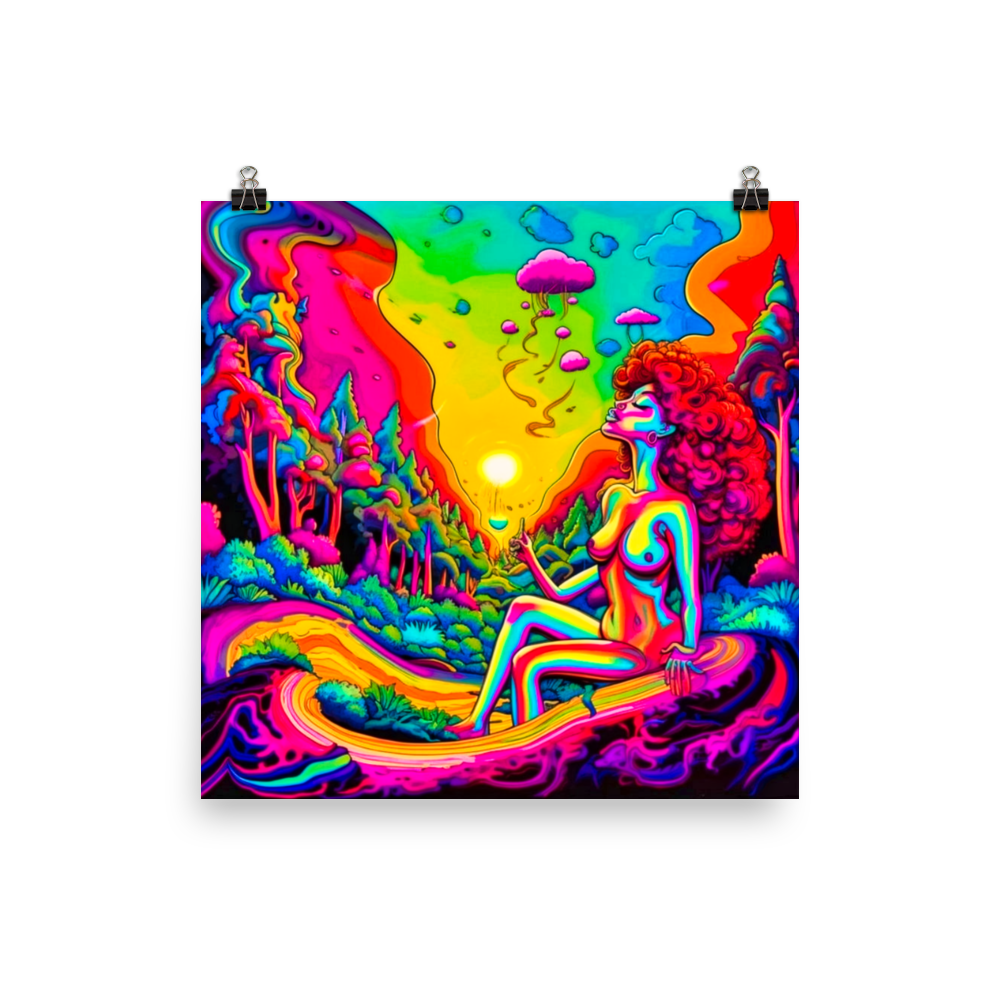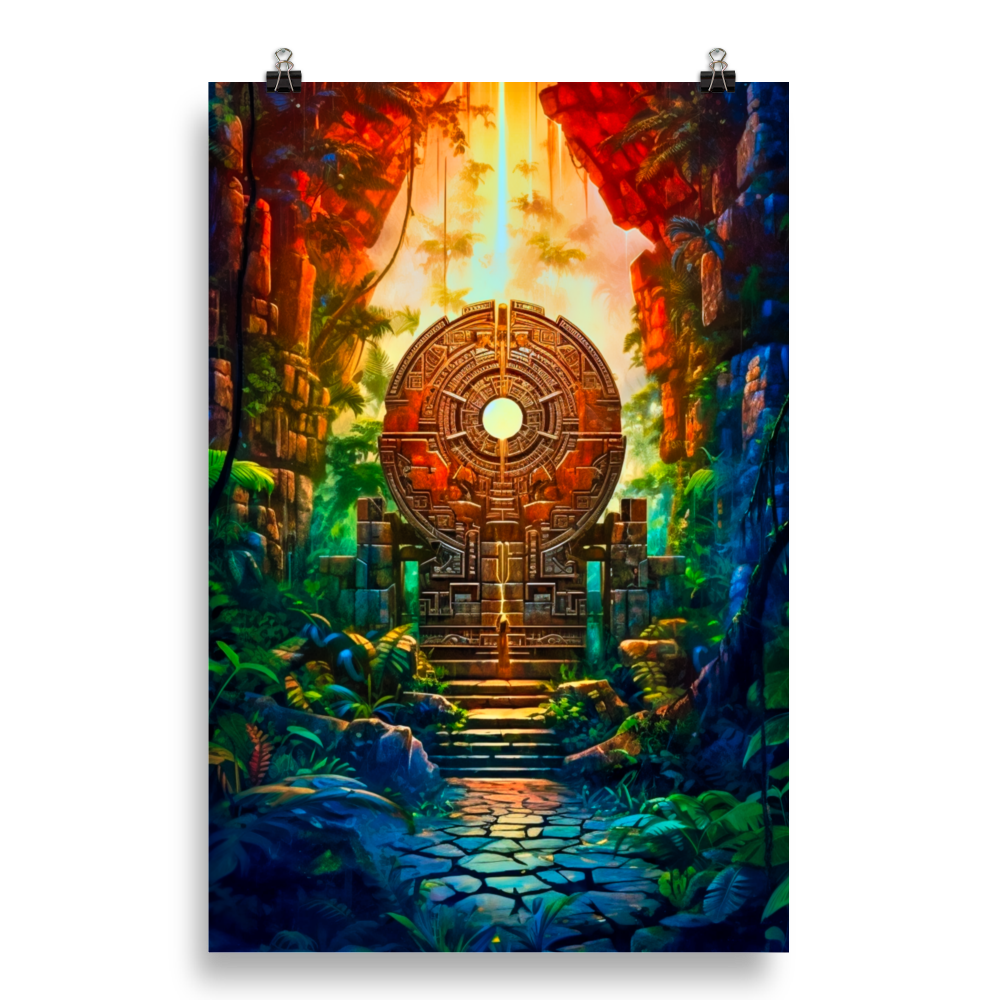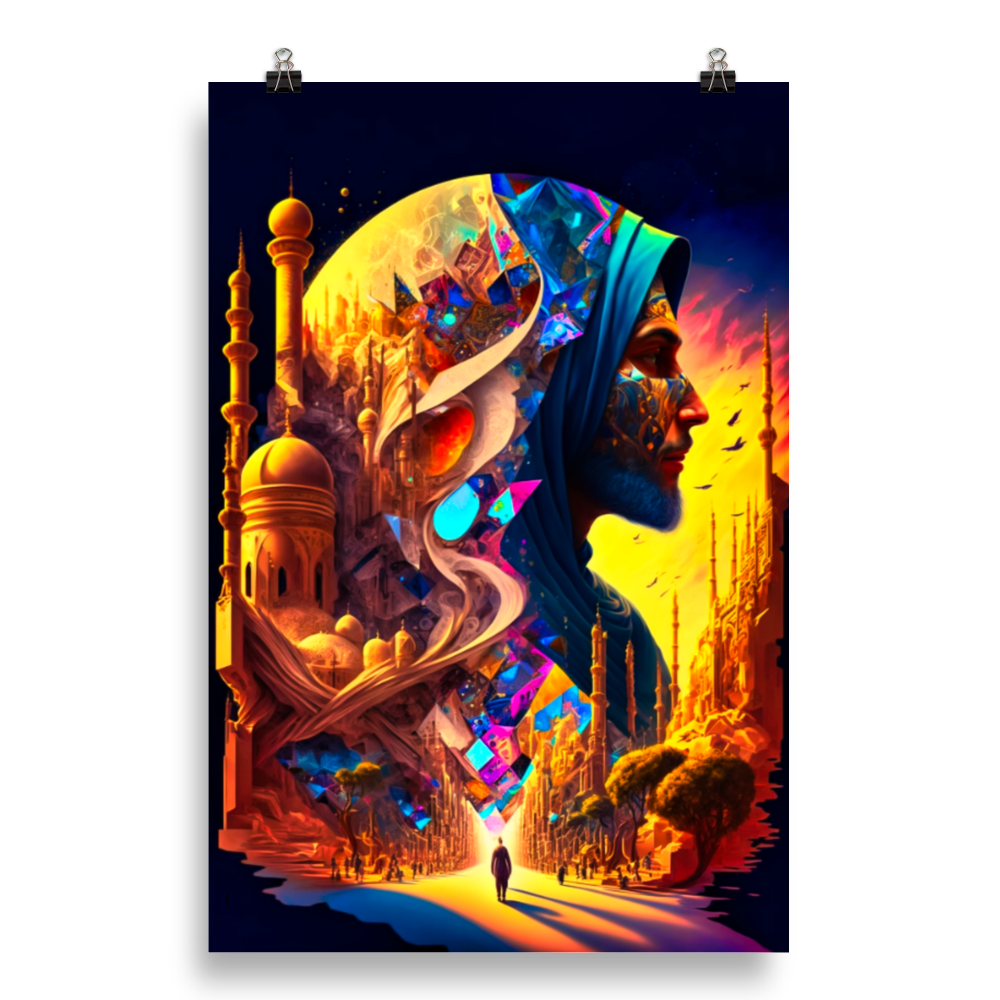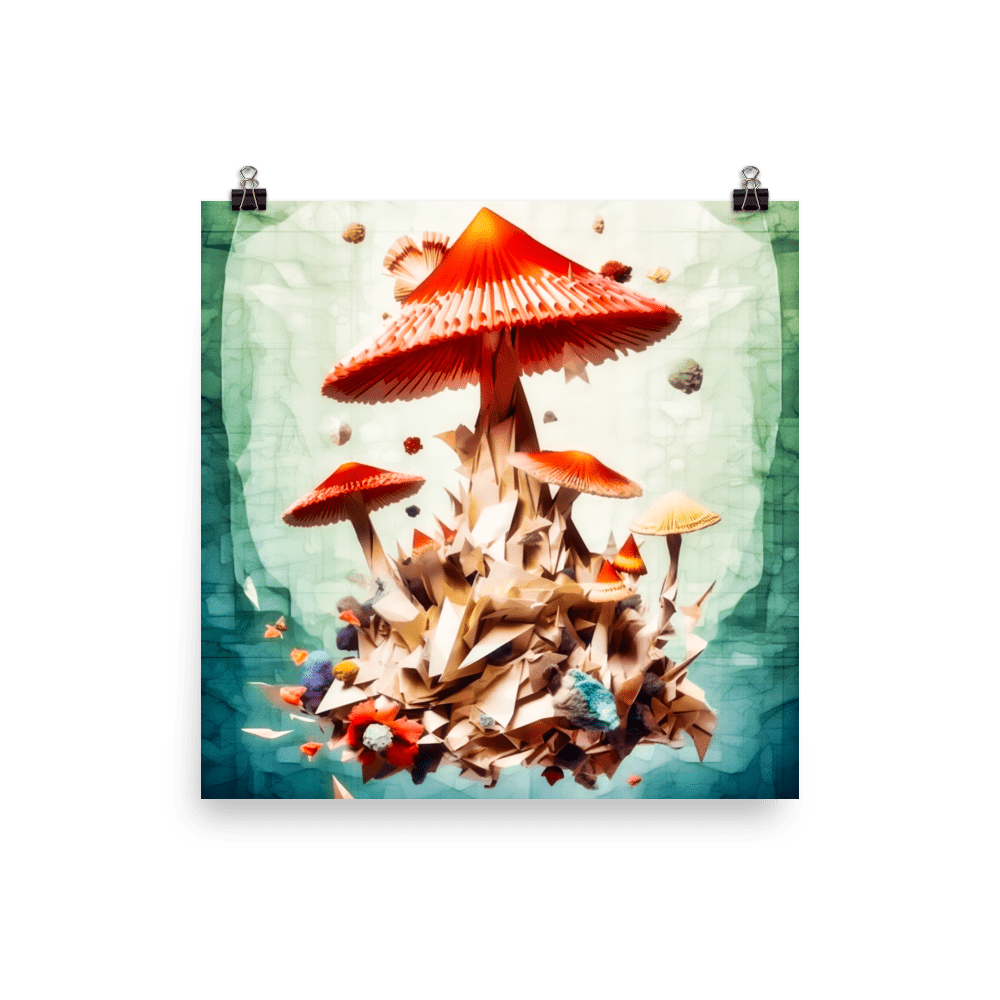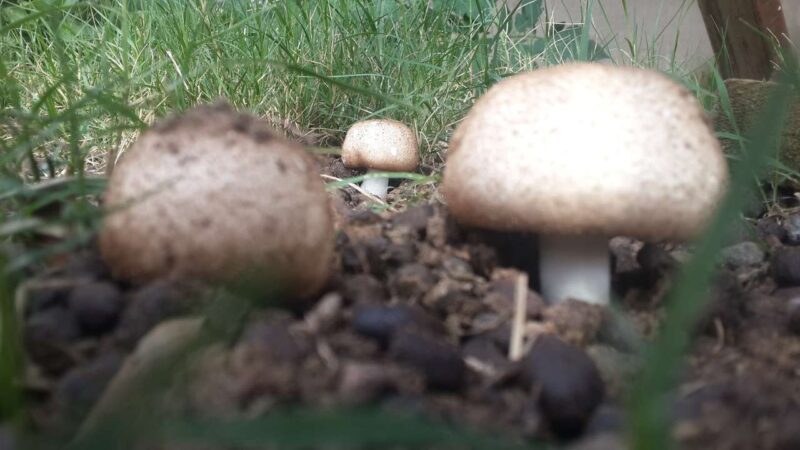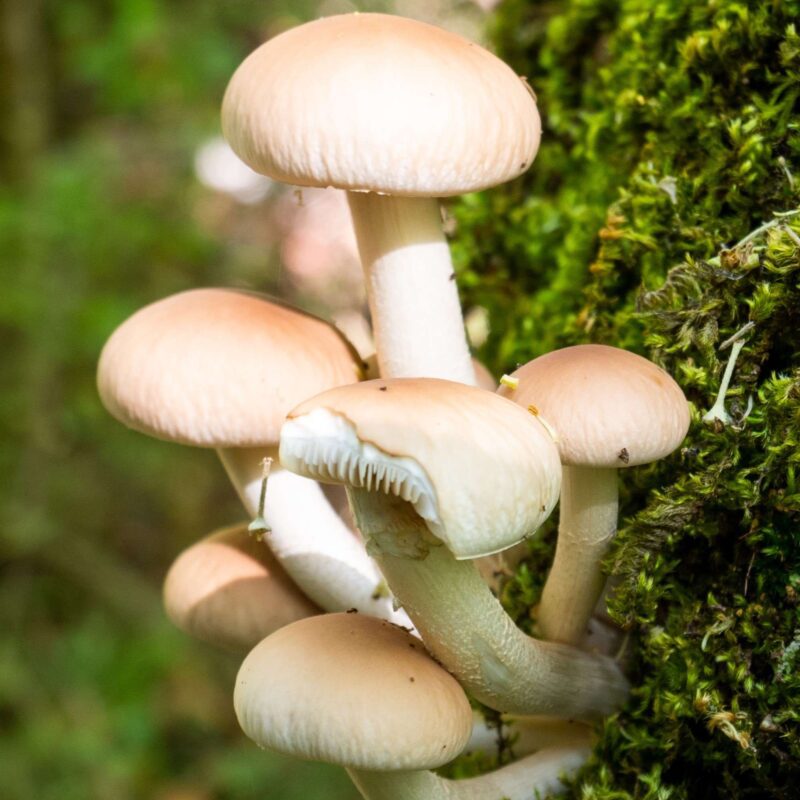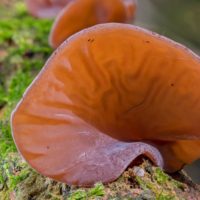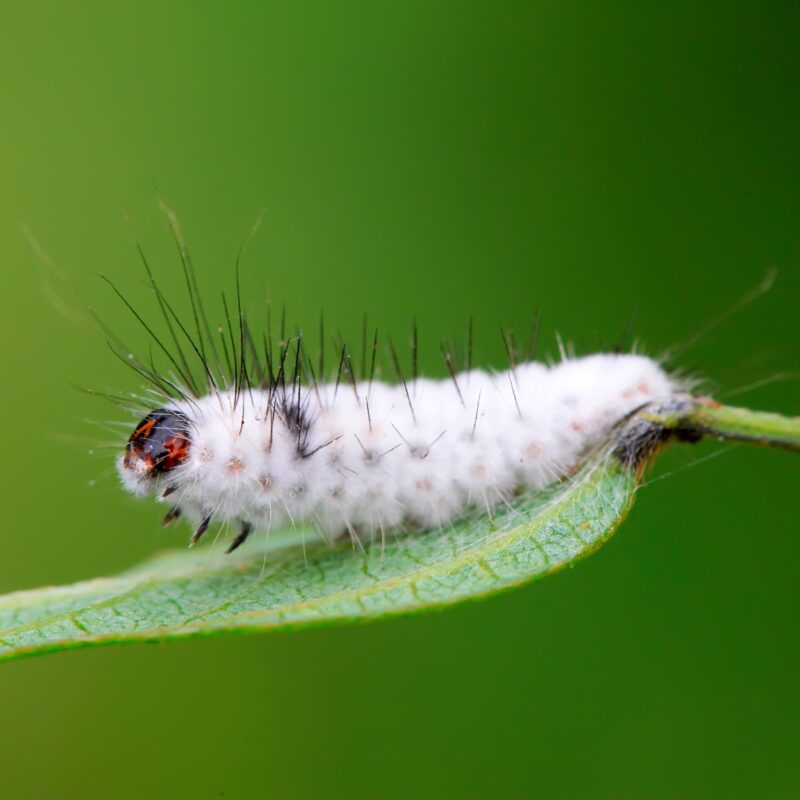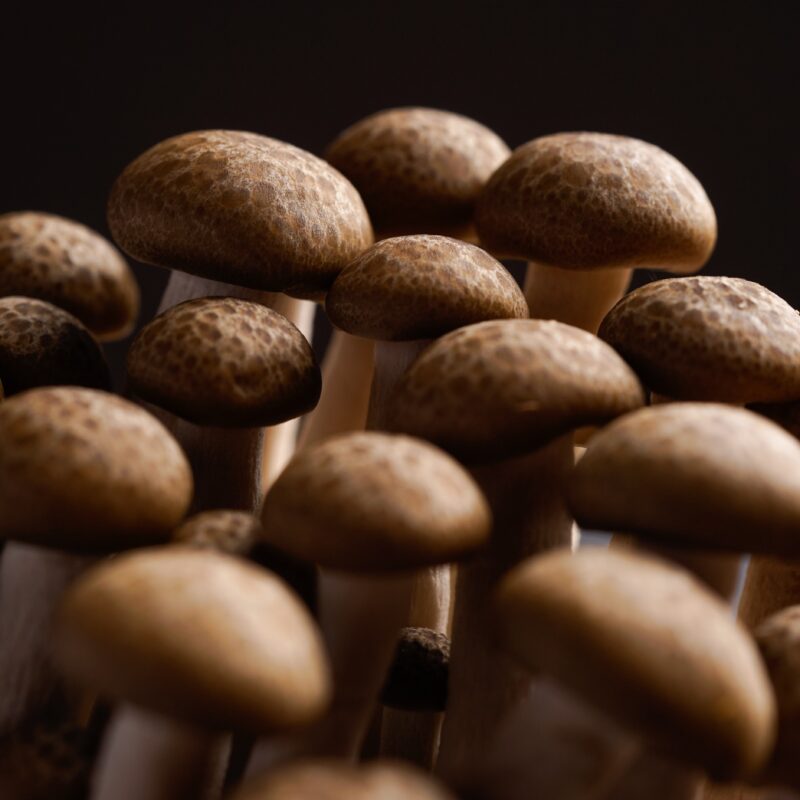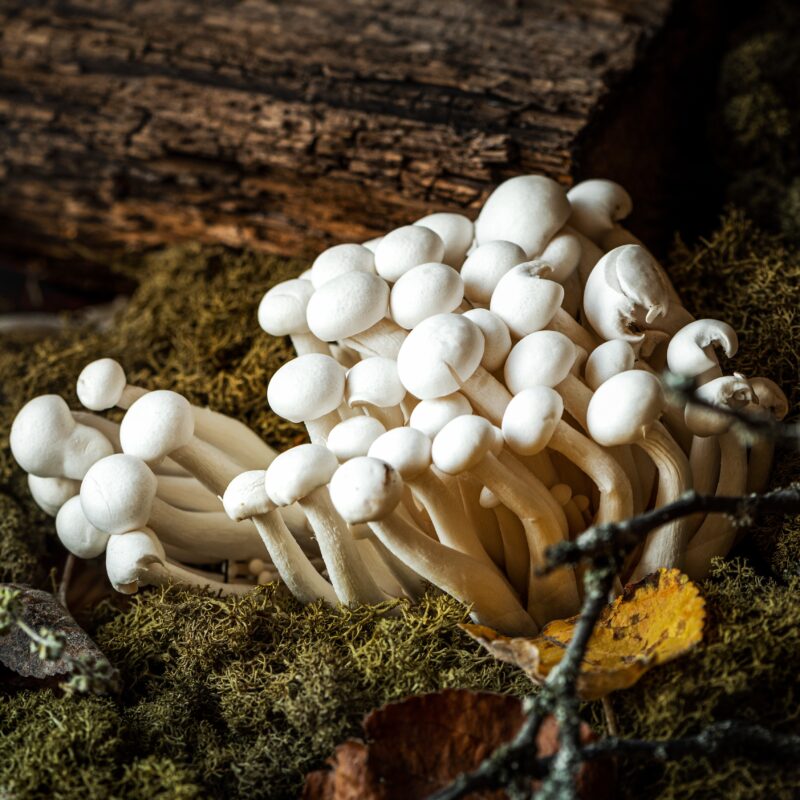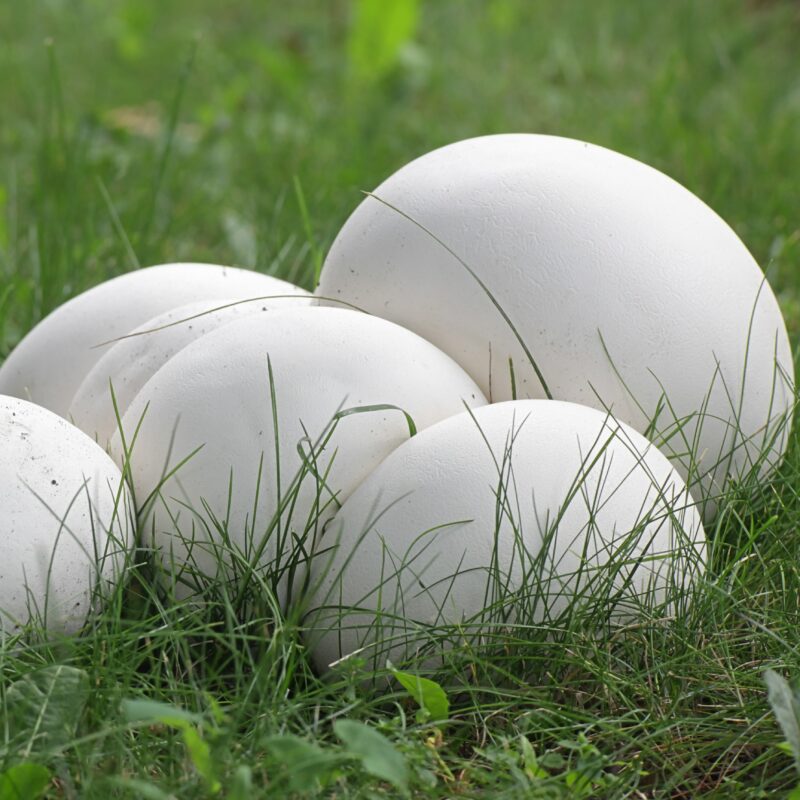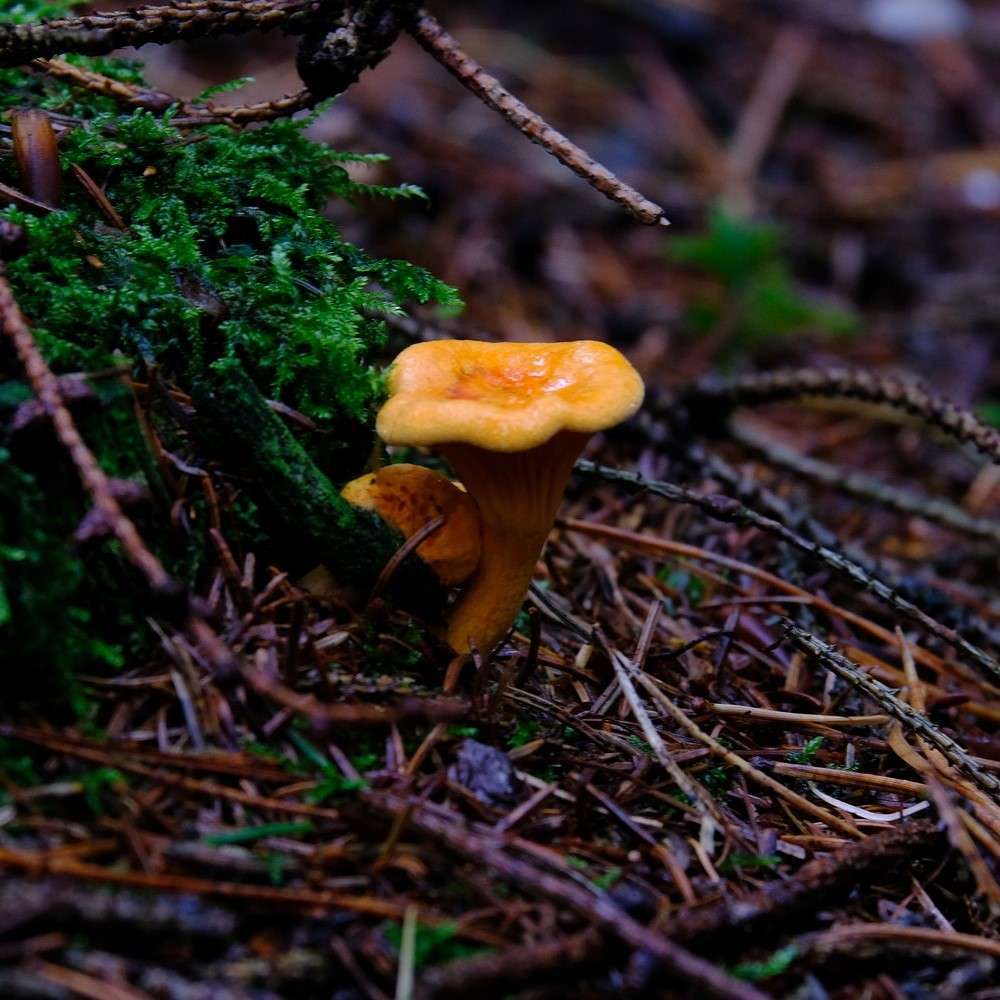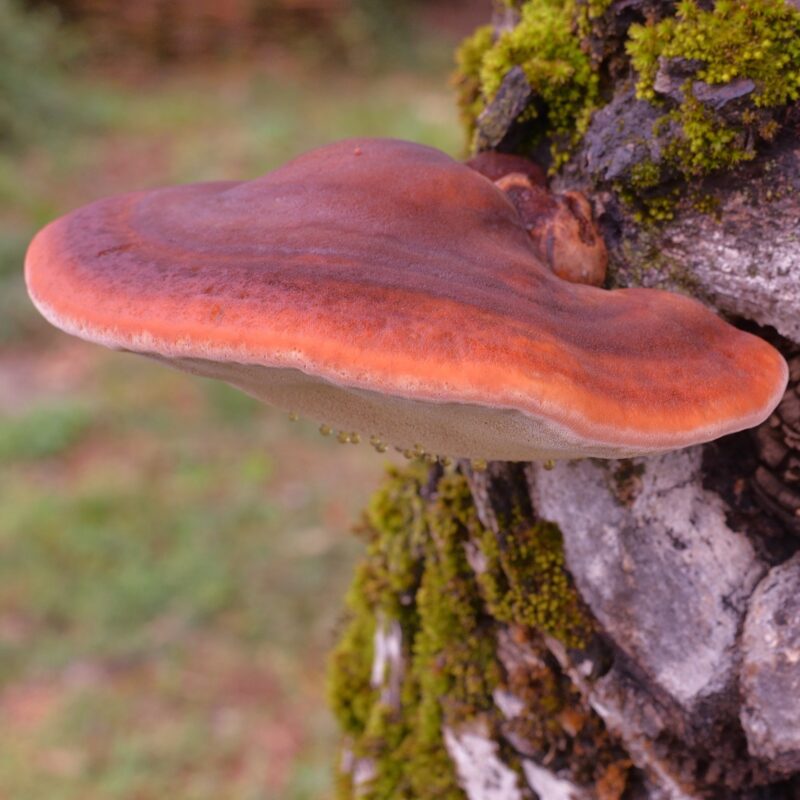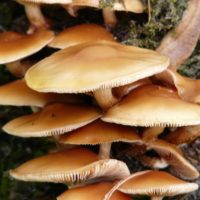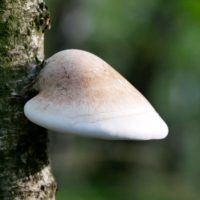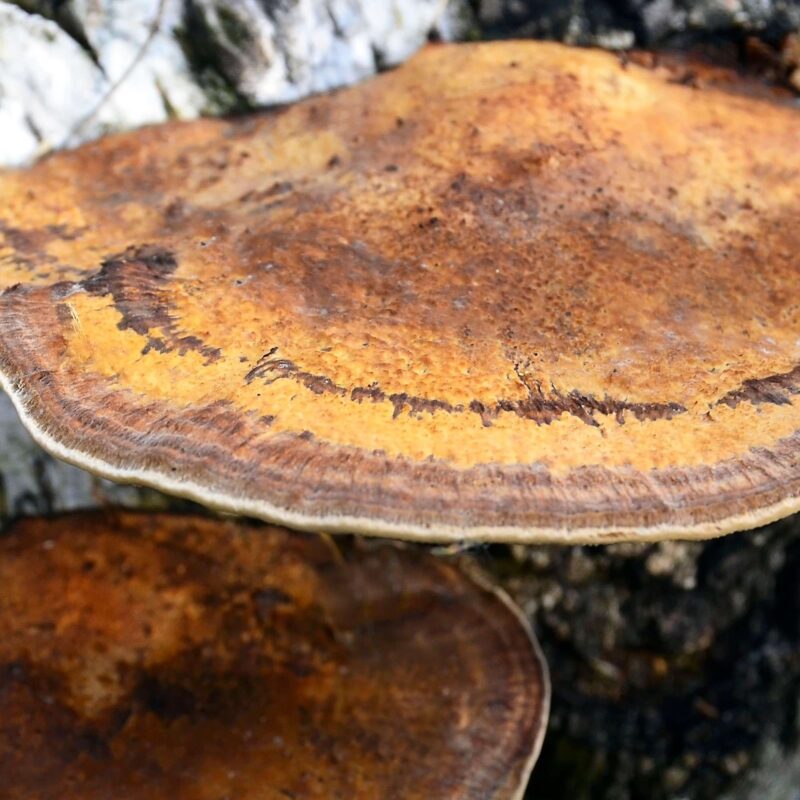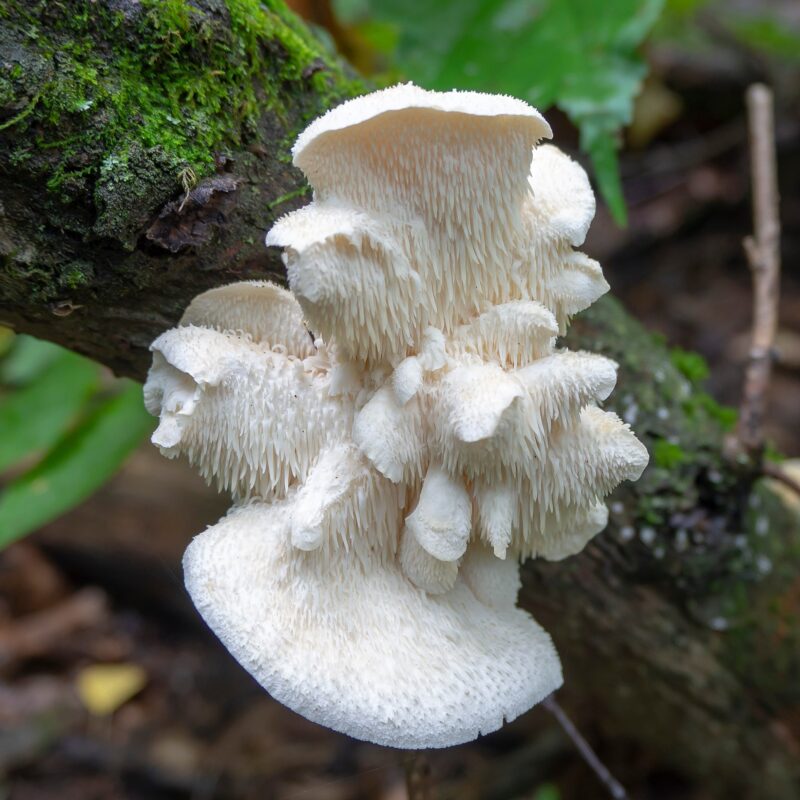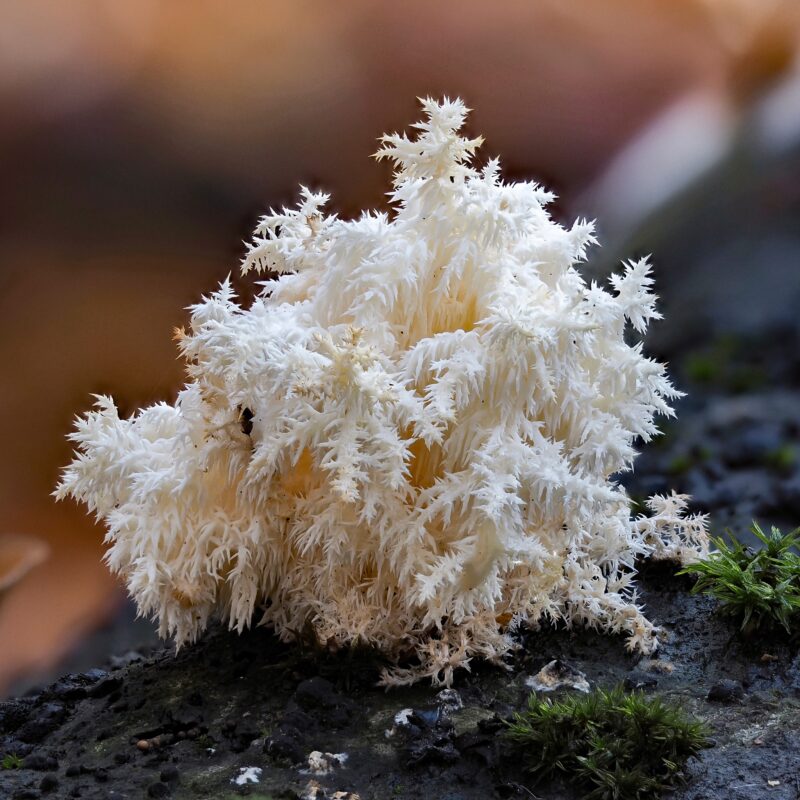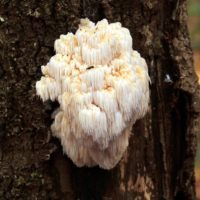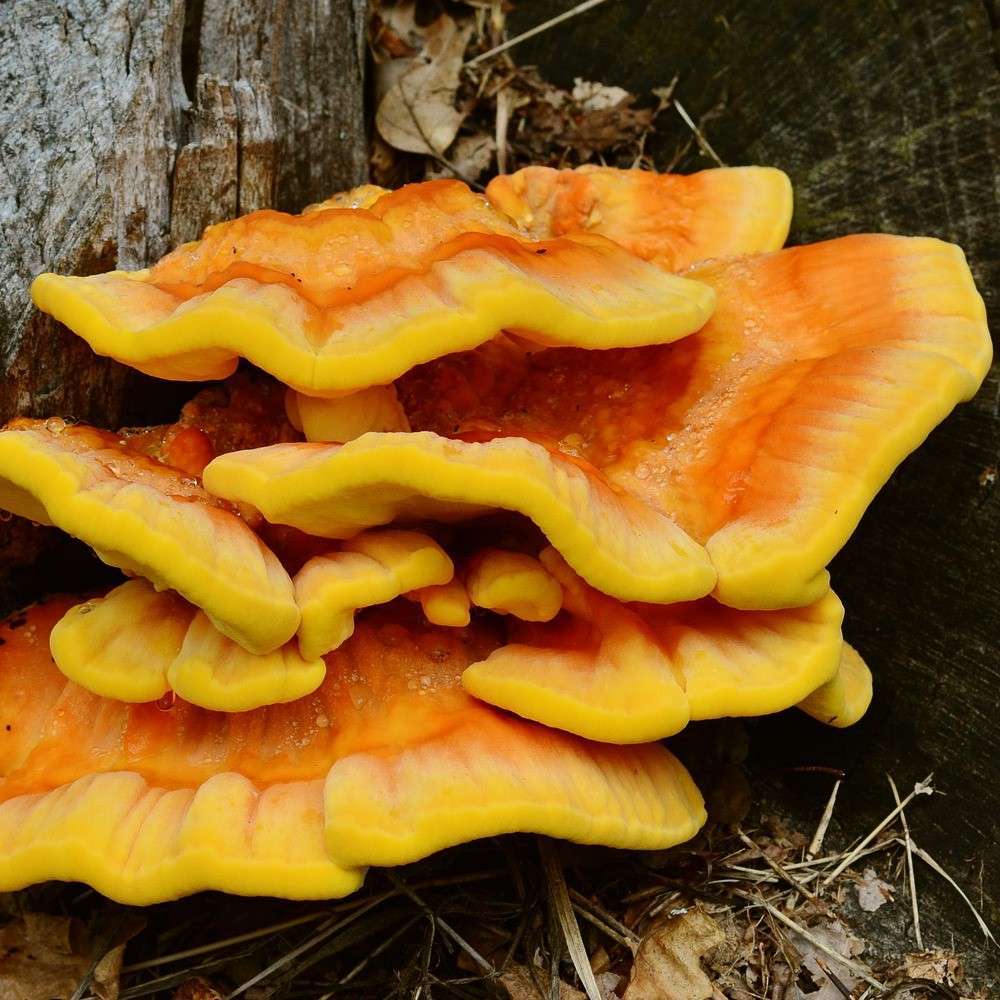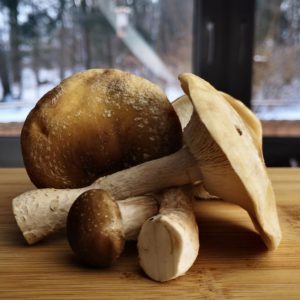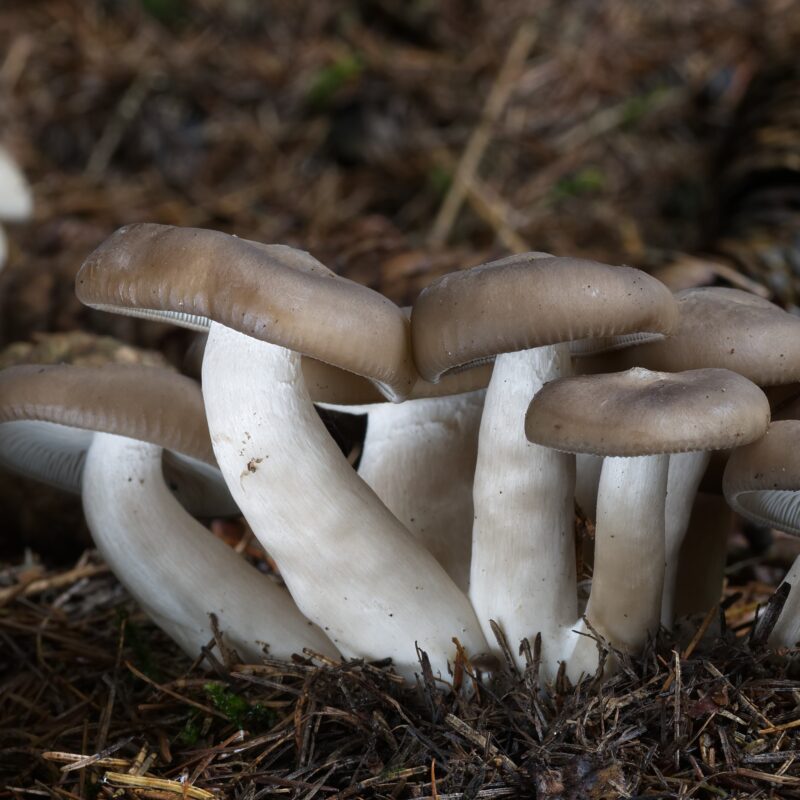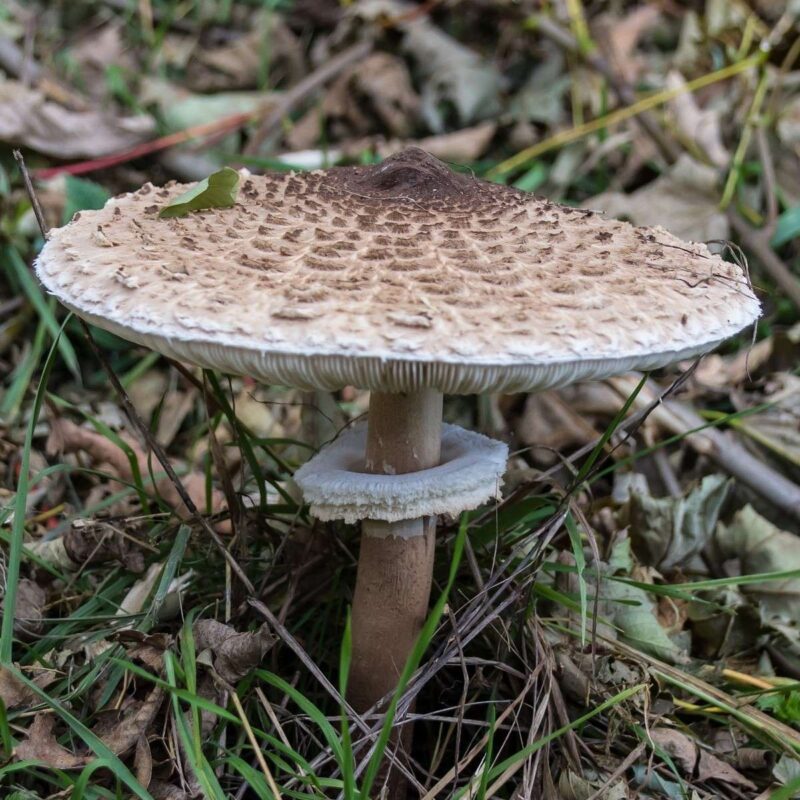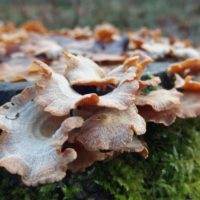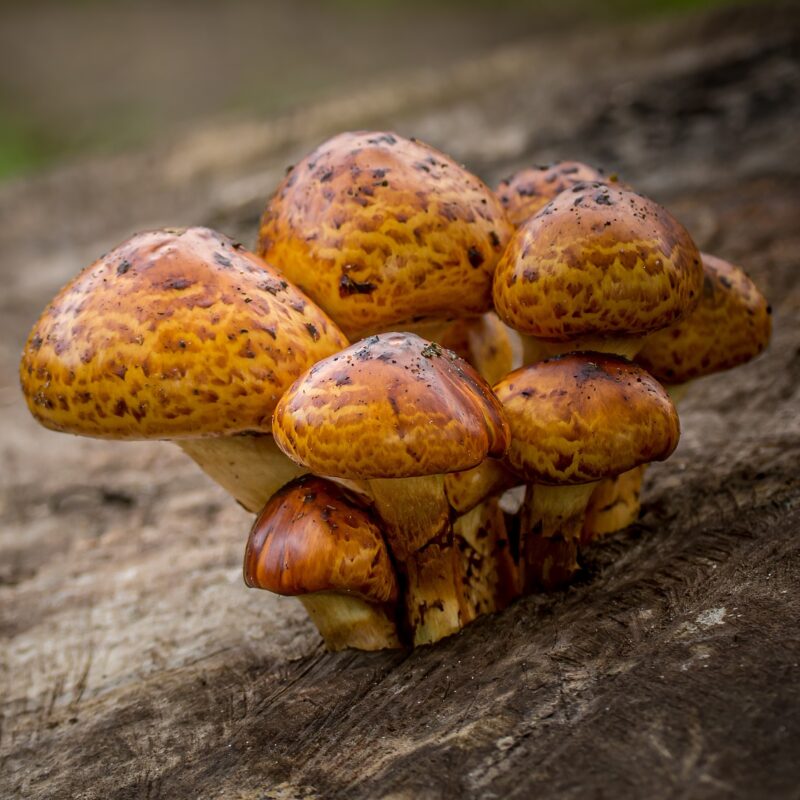Description
Properties
The Brazilian Almond Mushroom (Agaricus subrufescens, syn. A. brasiliensis, A. blazei) is a type of mushroom belonging to the Agaricaceae family. It gets its name from the almond-like scent of its fruiting body. It is also known by other names such as sun mushroom and mushroom of life.
One distinctive feature of Agaricus subrufescens is its almost cubic-shaped cap. This mushroom is a secondary decomposer, meaning it prefers a substrate that has been partially broken down by bacteria, such as horse manure or compost.
Apart from being a delicious culinary mushroom, Agaricus subrufescens has the potential to be recognized as a medicinal mushroom in the future. It has already been widely regarded as such in alternative medicine. Since 1993, it has been commercially cultivated and sold as an edible mushroom in Asia and South America.
Agaricus subrufescens is known for producing beta glucans, specifically 1-3 and 1-6 D-fractions of beta glucans. These polysaccharides are currently being investigated for their potential to enhance the immune system. Studies have reported beta glucan levels in this mushroom of up to 14%. The unique polysaccharides in Agaricus subrufescens stimulate natural killer cells, which can selectively target and destroy tumor cells. Additionally, the cultivated mycelium of this mushroom produces compounds that have anti-tumor properties, as documented by Mizuno (1999). Furthermore, the mycelium releases a yellowish metabolite with bactericidal properties.
Due to its significant content of b-D-glucan, Agaricus subrufescens is utilized in alternative cancer therapy, particularly in Japan and California. However, there is a lack of well-designed studies that directly compare the therapeutic effects of isolated ingredients, complete mushroom extracts, and epidemiological data. Additionally, the toxicological aspects of this mushroom have not been adequately studied.
1. Growing
Affiliate Partner
Growing Procedure
Agaricus subrufescens can be grown in both outdoor and indoor beds using a specific mushroom substrate. The substrate is created through a process called double hot rotting, which involves combining straw with poultry and horse manure, as well as lime or gypsum. Alternatively, experiments have been conducted using fermented straw or garden compost. There are other methods and substrates that can be explored for cultivation.
For sterile conditions, enriched substrates based on peat, straw, and cereal can be used, such as the modified till substrate. Another method, known as Huhnke’s method, involves sterilizing the material first and then allowing it to ferment. Agaricus subrufescens, like other secondary decomposers found in soil, benefits from a large-scale cultivation system. Using beds, whether indoors or outdoors, is the preferred choice to achieve good yields.
Sterile pouch cultures using modified till substrate can also be employed, although they may not yield as much. Some growers find success by subjecting the culture to a cold shock just before opening it. A crucial factor for successful breeding is the quality of the covering material, known as casing. In trials conducted by experienced growers, a simple, nutrient-rich, dark garden soil that has been sieved and pasteurized has proven to be the best casing material. Professionals often pre-inoculate their covering material with the Agaricus subrufescens culture, which speeds up the cultivation process.
Growing
Agar Culture Media: MYPA, MEA
Cropping: Every 2-3 weeks, 2-3 flushes
Containers for fruiting: Grow bags, in tropical and subtropical climates: tree trunks, mushroom beds
Biological efficiencies: 50-75%
Substrates: Its a secondary decomposer and loves nitrogen- enriched composts or pasteurized substrates with wood
Nitrogenous additives: urea, bran, ammonium nitrate, chicken manure
Growing Characteristics
Agaricus subrufescens, also known as the Brazilian Almond Mushroom, can be found growing individually or in clusters. It plays a vital role as a subsequent decomposer in the ecosystem.
S
|
P |
F
|
|
|---|---|---|---|
Temp °C |
21-27 | 21-24 | 24-27 |
Relative Humidity % |
90-100 | 80-90 | 75-85 |
Duration d |
28-90 | 18-24 | 4-8 |
CO2 ppm |
>5000 | 400-800 | <800 |
FAE per h |
1 | 5-7 | 4-7 |
Light lux |
– | 1000-2000 | 1000-2000 |
Natural Habitat
It was previously believed that Agaricus subrufescens, commonly known as the Brazilian Almond Mushroom or Agaricus brasiliensis, originated exclusively in the pristine forests of Brazil. However, recent findings have disproven this notion. This fascinating mushroom species can also be found in other regions, including North America and Central Europe. In fact, Richard Eibl, a highly regarded mycologist, successfully identified it in North Rhine-Westphalia.
Agaricus subrufescens flourishes in environments characterized by nutrient-rich soil, well-composted soils, mixed woods, and forest edges. It exhibits a preference for warm climates and is frequently encountered in Mediterranean areas. The prime season for its growth extends from early summer to late autumn.
2. Identification
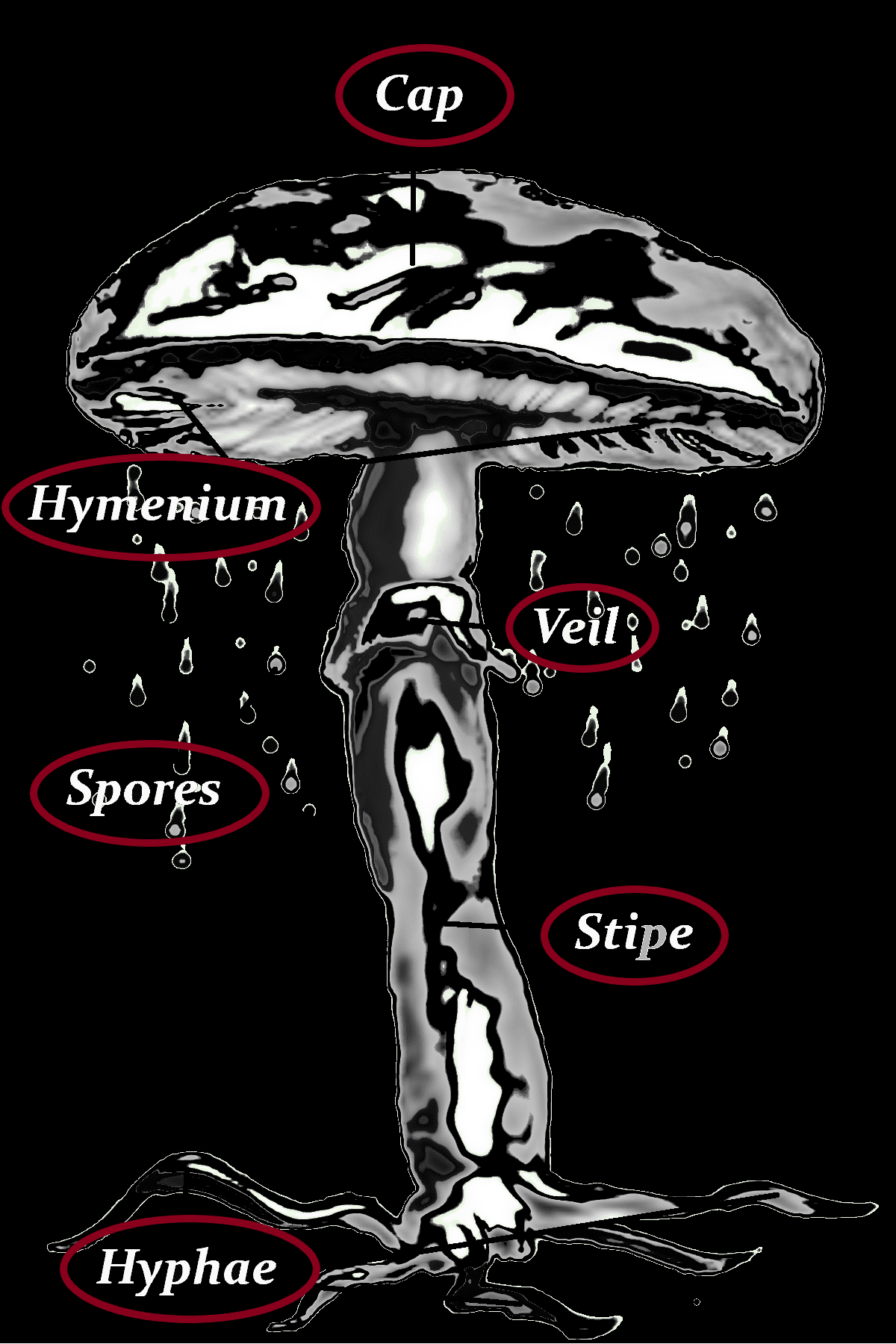
Cap
-7-25cm Ø
-first convex, soon hemispheric, then broadly convex
-light brown, red to darkbrown
Hymenium
-first pale, soon gray then chocolate brown
-free
Stipe
-cylindrical
-flesh thick, solid
-tall
-whitish and smooth, when bruised it quickly stains yellowish (ochraceous)
Veil
-thin
-hanging
-quickly ephemeral
Spores
dark violet to (chocolate)brown
-(5,5-7,5 x 4-5 µm)
-basidia four-spored
-heterothallic matting system
Hyphae
-mycelium striped lengthways, overlaid with radiation rizomorphs
-cottony mycelial undergrowth
-after one month of incubation on 2% MEA, rhizomorphic mycelia in culture produce hyphae aggregates and pseudoprimordia that do not enlarge to maturity
-loosely aerial in age
-mycelia often gives off a yellowish, almond-smelling metabolite
Danger of confusion
Agaricus cappellianus, Agaricus langei, Agaricus moelleri, Agaricus silvaticus
3. Consuming
Gourmet
Agaricus subrufescens has a slightly musty-sweet taste and is edible. Besides their amaretto-like odor, it haa delightful amaretto-like odor and a subtle, unobtrusive “musty” aroma that pleases gourmets around the globe. Can even be prepared as a dessert!
Smell
almond-like, mushroom-like
Taste
sweet, mild, a bit moldy, green nuts
Flesh
white-pink, from edge reddish discoloration, thick
Nutritional content of 100g
| moisture | 9.88% |
| protein | 39.3% |
| fat | 1.8% |
| fiber | 25.6% |
| ash | 10.1% |
| carbohydrate | 38.9% |
| phosphorus | 939 mg |
| iron | 18.2 mg |
| calcium | 41.6 mg |
| vitamin B1 | 0.48 mg |
| vitamin B2 | 2.84 mg |
| ergosterol | 345 mg |
| niacin | 40.9 mg |
4. Data
other names
Agaricus Blazei Murill, Jisongrong, Himematsutake, Kawariharatake, Cogumelo de Deus (Mushroom of God), Royal Sun Agaricus, Murills Agaricus, Agaricus subrufescens, ABM, A. brasiliensis, King Agaricus, Almond Portobello, Brasilianischer Mandel-Egerling, Sonnenpilz, Lebenspilz
| Englisch |
almond mushroom
|
| Niederländisch |
Bladhoopchampignon
|
| Wissenschaftl. Name |
Agaricus bambusae
|
| Wissenschaftl. Name |
Agaricus brasiliensis
|
| Wissenschaftl. Name |
Agaricus subrufescens
|
| Kingdom | Fungi |
|---|
| Division | Basidiomycota |
| Class | Agaricomycetes |
| Order | Agaricales |
| Family | Agaricaceae |
| Genus | Agaricus |
| Species | A. subrufescens |
| Ecology | Saprotrophic |



